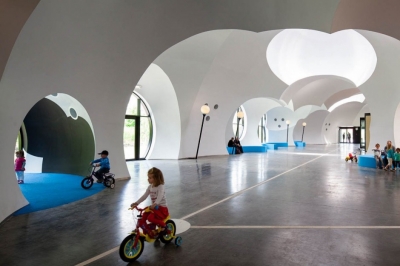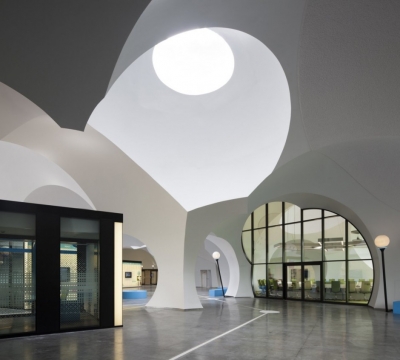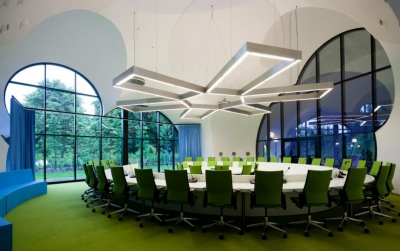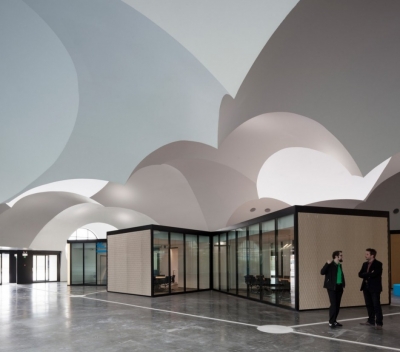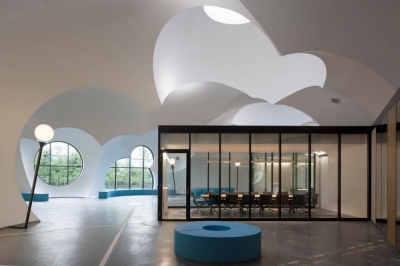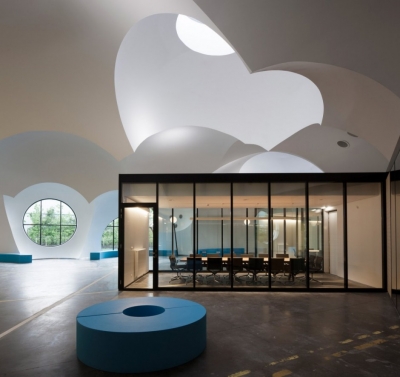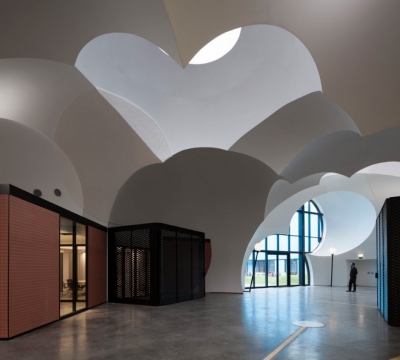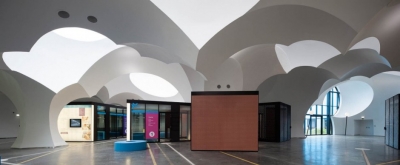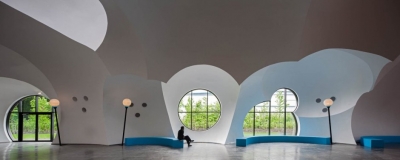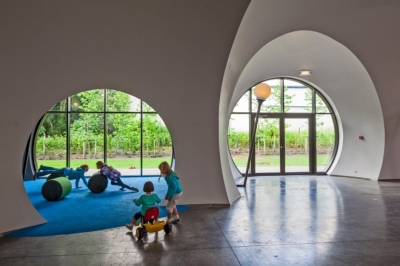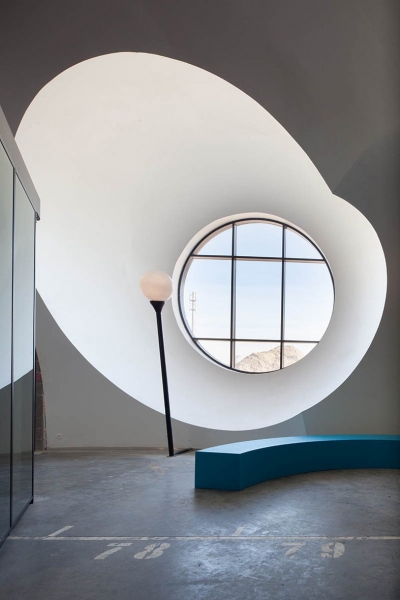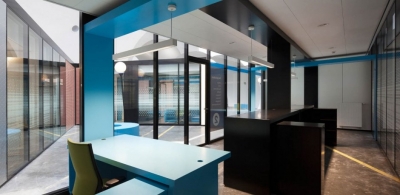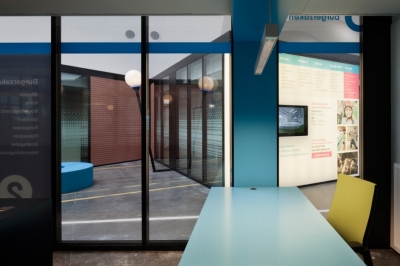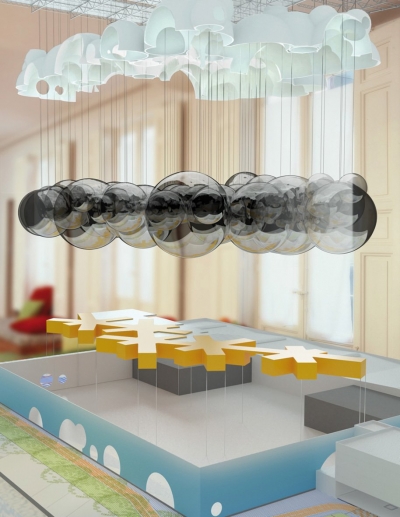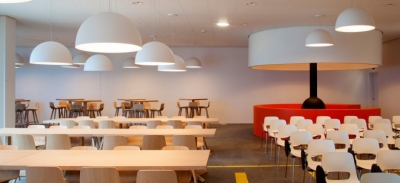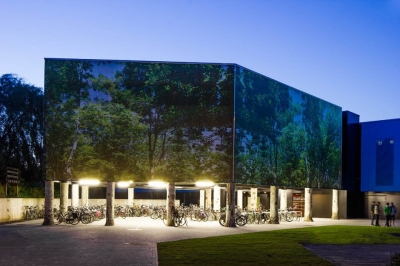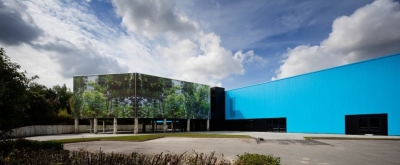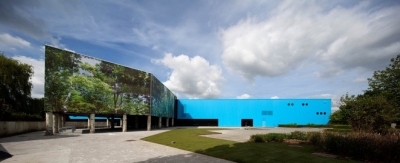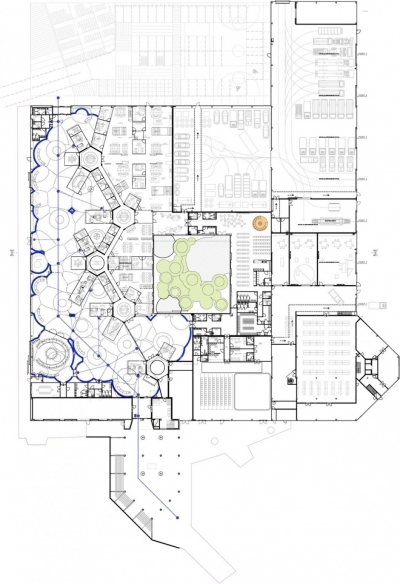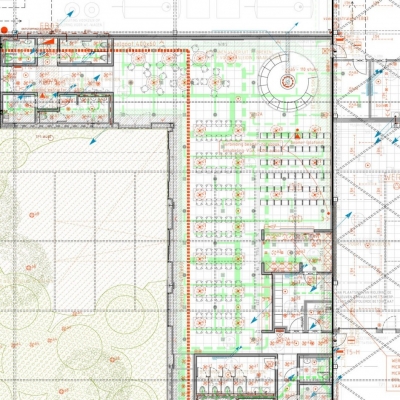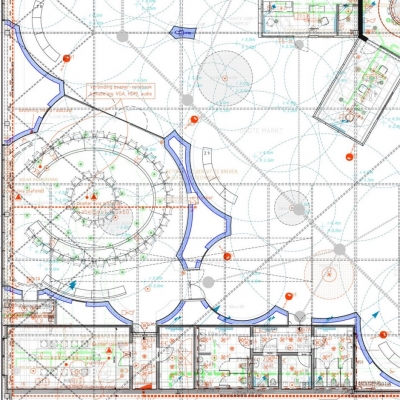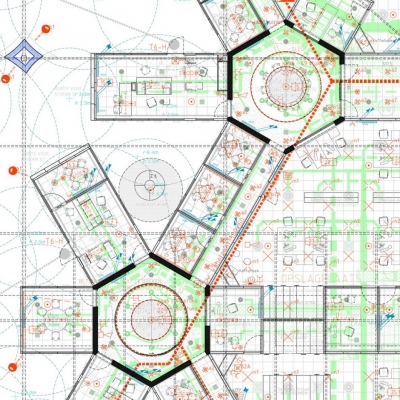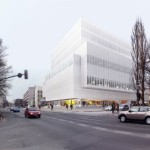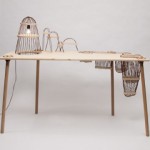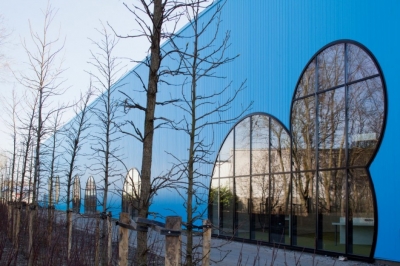
Project: OostCampus
Designed by Carlos Arroyo Architects
Location: Oostkamp, Belgium
Website: www.carlosarroyo.net
Circular shapes take center stage with the splendid OostCampus design created at Carlos Arroyo Architects studio.
From the Architects:
OostCampus is the seat of civic, administrative and social services of an area in the heart of the countryside around Bruges (Brugse Ommeland), a beautiful landscape outlined by rows of trees and canals, and punctuated by residential castles built along the centuries by wealthy merchants from neighboring Flemish town, and enriched with discrete industrial parks with high end technology companies like Siemens, Tyco, Entropia Digital, or EADS.
In 1977 four municipalities were grouped, Oostkamp, Hertsberge, Waardamme and Ruddervoorde, as a result of a national law that eliminated more than 300 municipalities across Belgium. They regrouped services, but the resulting facilities were scattered in various municipal buildings.
In 2006, the City acquired a 4 hectares plot of land with Coca-Cola facilities built in 1992, which had become obsolete. The plot, located 5 minutes walk from the centre of Oostkamp, 10 minutes by bike from the other nuclei, and near the exit of Highway E-40, offered the opportunity to regroup municipal services, optimizing synergies and building a common image.
In 2008 the Flemish Government Architecture Agency (Vlaams Bouwmeester) announced an international competition for ideas to build OostCampus, with a slogan that paraphrases Magritte: “Ceci n’est pas … een Administratief centrum”.
The winning project, by the Madrid studio lead by Carlos Arroyo, opted for a radical re-use of the large industrial existing building, including foundations, floors, supporting structures, outer skin, insulation, waterproofing, and all recoverable services and equipment: power station, heating plant, water pipes, fire hoses, sewerage, and even parking area, fencing and access.
The reuse of the existing is a basic criterion of sustainability. The “gray energy” (energy used for the production of something) is often discarded or simply ignored. If we demolish an existing structure and build again, we will use more energy and resources than the most efficient of buildings can of save in its life span.
To transform the vast industrial hall – with minimal footprint but maximum spatial result – Arroyo designs a sheltered interior public space, wrapped in a “luminous landscape of white clouds”. Thin shells of GRG (gypsum and fibre) span the large space like huge soap bubbles. They are only 7 mm thick.
Within this landscape, a set of modular clusters provides the administrative services and spaces, designed to facilitate the relationship between citizens and administration. Citizen participation in the process is one of the key issues. Also transparency: the chamber hall is in full sight in the middle of public space, the information is accessible, you can even you visualize the municipal website … and physically enter it and talk to the person who is behind!
The materials are simple and inexpensive, but are selected and used in such a way that we want to go and touch them. Some elements are finished with a felt made from recycled bottles (PET); simple boards are CNC carved to become sophisticated 3D damascene; the floor is the existing industrial warehouse poli-concrete, with its lines of storage, on which the new signage is superimposed. The acoustics are carefully worked out, and so is the smell!
Thermal comfort is achieved with minimum effort, thanks to the technique of the “thermal onion” which optimizes climate areas according to levels of access, and making use of the thermal inertia of the concrete slab.
The price per square meter building is one-third of the usual for comparable buildings.
Source Contemporist. *


